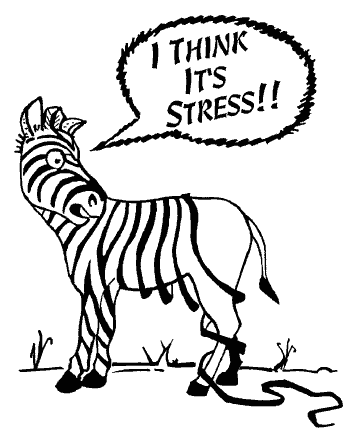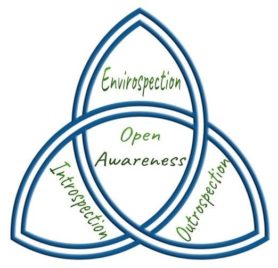 If you had a simple skill to inhibit stress based reactions within a few seconds (including fear, anxiety, anger and procrastination), would that interest you?
If you had a simple skill to inhibit stress based reactions within a few seconds (including fear, anxiety, anger and procrastination), would that interest you?
If this skill also enabled you to enter a cool, calm and collected state while broadening your perspective about yourself and others, as well as increasing your levels of resilience and resourcefulness in any situation, would that make you even more curious?
If so, read on…
Referring to brain scans from the Farb, et al. (2007) research, Hanson & Mendius, (2009) suggest that cultivating panoramic awareness and spacious mindfulness activates areas of the brain that facilitate a calm and relaxed sense of well-being in which we are able to disassociate from our thoughts in order to see things in a broader context — akin to having a “bird’s-eye-view” on a situation. Trainer of NLP and hypnotherapy John Overdurf (2013) refers to the same phenomenon as peripheral vision suggesting that it acts on the brainstem and pre-frontal lobe, in effect short circuiting fear and stress reactions. Overdurf has been using peripheral vision (one of the Applied Open Awareness skills) in psychological interventions since the 1980s to help his patients “flatten out anxiety”.
During my training with John Overdurf (2004 – 2010), we discovered first-hand how techniques to establish open awareness work rapidly to reduce or even eliminate negative states and behaviours. Since 2004 I have regularly used Applied Open Awareness (AOA) in coaching and therapy with my own clients, as well as taught it to many others at the courses and seminars that I present. AOA has been found to be a consistently effective approach to calming the mind and body, enhancing internal awareness of the quality of one’s thoughts and emotions, while opening one’s awareness to broader levels of perception. In this regard, AOA is effective at enhancing one’s intuition.
Tunnel Awareness — a limited view that limits our capabilities
The flip-side of open awareness is tunnel awareness, which can be understood as a narrowed focus of attention that deletes from consciousness everything in the periphery of one’s field of awareness. The fight and flight (stress) response is correlated with being in tunnel awareness, since we are required to identify only what the perceived danger is, thereby deleting whatever else is not necessary in our awareness in order to fight or take flight in a life threatening situation. Similarly, in situations that are not threatening to our life, but considered by the individual to be unpleasant or disturbing, where one remains fixated on the object of negative reference, all other points of reference, including the quality of one’s own thoughts and feelings are negated. Such is the case for those who experience overwhelming stress, whereby that which perpetuates the problem is what one’s attention remains narrowly focussed on, thus the problem remains a problem.
According to Bloom and Farragher (2010), tunnel awareness is a narrowing of the perceptual field that results in difficulty to engage in complex thinking, to see interconnectedness or interrelationships between chunks of information. Learning and planning abilities are also impaired while we are in tunnel awareness and experiencing stress. This is when we revert to automatic reactions and rules,- “Under stress, people tend to do what they know best rather than what would be best” (p. 109). The tunnel awareness stress reaction reduces decision-making abilities, which become impulse, inflexible, poorly constructed and oversimplified (Janis, 1982). Tunnel awareness constrains our creative thinking abilities and we become more dogmatic, focusing at best on solutions to problems that have worked in the past rather than finding something better suited to the results that we would like to achieve in our current situation (cited in Bloom and Farragher, 2010).
The physiological and psychological effects of excessive stress, including burnout are outcomes of operating for too long in a state of tunnel awareness. AOA is a practical approach that can help people to be more aware of their inner and outer resources. Anyone can learn how to open the aperture of their awareness in order to reveal more of their inherently enlightened state.
An AOA technique
While looking at whatever you’re looking at or listening to whatever you’re listening to, allow yourself to also become aware of what’s occurring in the periphery of your visual and auditory field of awareness. Simply allow your visual and auditory scenes to expand more around you so that you become more conscious of what’s in the outskirts of your awareness. While doing this, apply the same approach to your sense of feeling by noticing sensations throughout your body and paying attention to any emotions (through passive observation). Get in touch with your body’s overall state. In this heightened visual, auditory and kinaesthetic awareness you can become more aware of your thoughts and feelings while at the same time being acutely aware of what’s going on in the environment around you.
If you’re in a heated discussion, whether, face-to-face or over the phone, you may notice that AOA helps you compose your thoughts and become more present. If you’ve got a mental block, or performance anxiety, notice how AOA enables you to relax and get back into the flow.
AOA to achieve mindfulness and meditation
AOA by its very nature cultivates mindfulness while enhancing one’s ability to remain mindful when interacting with others as well as when when facing challenges.
With the multiple benefits of meditation now well documented, more people would likely choose to meditate if they knew about an effective meditation method that is easy to learn and practical for people in modern society. An example of such an approach is AOA when it is applied without any particular goal in mind. AOA takes only a few minutes to learn, it can be applied in any place at any time of day, and the benefits of using it begin to take effect within a few seconds of using the technique. On this basis, AOA may be of particular use to busy people who don’t have time to meditate in the more traditional sense, or those who are sceptical of Eastern practices, and especially those who might be at risk of being effected by stress or burnout.
Furthermore, I have personally found that the establishment of open awareness serves as a useful expediency to access deeper levels of meditation. Using AOA, our clients and course participants report that this process can facilitate awareness of even more subtle realms of consciousness, where the boundaries between object and subject seem to dissolve and where a sense of unity and interconnectedness arises. It is becoming apparent that AOA may function as a bridge between the mental domain and transpersonal realms of consciousness.
Summary
Applied Open Awareness is recommended as a practical resource that is easy to apply in order to alleviate overwhelming levels of stress and prevent burnout as well as issues that are associated with the concealment of consciousness, for example: anxiety, fear, anger, sadness, confusion, and guilt, as well as limited perceptions about oneself and one’s capabilities.
With AOA known to induce an open, receptive and calm state of mind and body, once integrated as an automatic response to the challenges of life, one can expect to experience a new quality of life, or as suggested by Walsh and Vaughan (1980), a raised perception of reality.
Written by Jevon Dangeli – MSc Transpersonal Psychology, Coach & Trainer
>> How close are you to burnout? The Burnout Self Diagnostic Tool
>> Discover Jevon’s burnout prevention audio programme
References:
Bloom, S. L. and Farragher, B. (2010) Destroying Sanctuary: The Crisis in Human Service Delivery Systems. New York: Oxford University Press, pp. 102-106.
Farb, N.A.S., Segal, Z.V., Mayberg, H., Bean, J., McKeon, D., Fatima, Z., and Anderson, A.K. (2007). Attending to the present: Mindfulness meditation reveals distinct neural modes of self-reflection. SCAN, 2, 313-322.
Hanson, R., & Mendius, R. (2009). Buddha’s brain: The practical neuroscience of happiness, love, and wisdom. New Harbinger Publications.
Janis, I. L. (1982). Decision making under stress. Handbook Of Stress: Theoretical And Clinical Aspects. L. Goldberger and S. Breznitz. New York, Free Press,pp.69-87.
Overdurf, J. Personal communication, June 20, 2013. http://www.johnoverdurf.com
Walsh, R and Vaughan, F. (1980). Journal of Humanistic Psychology 20, 5-31.
